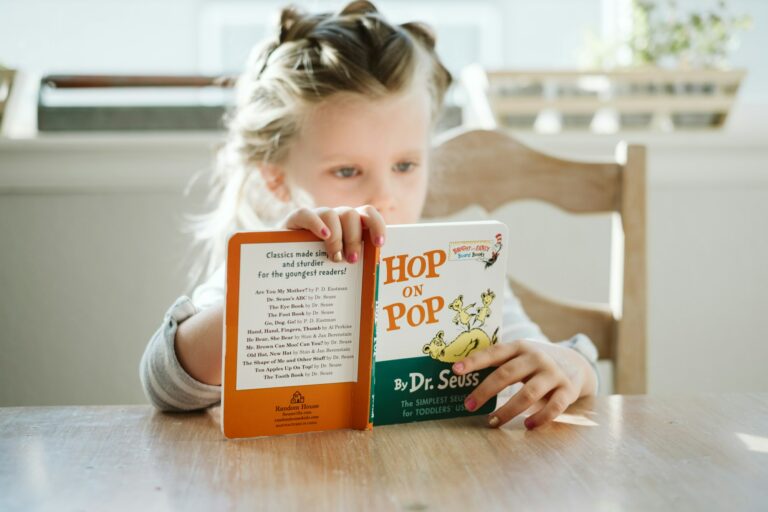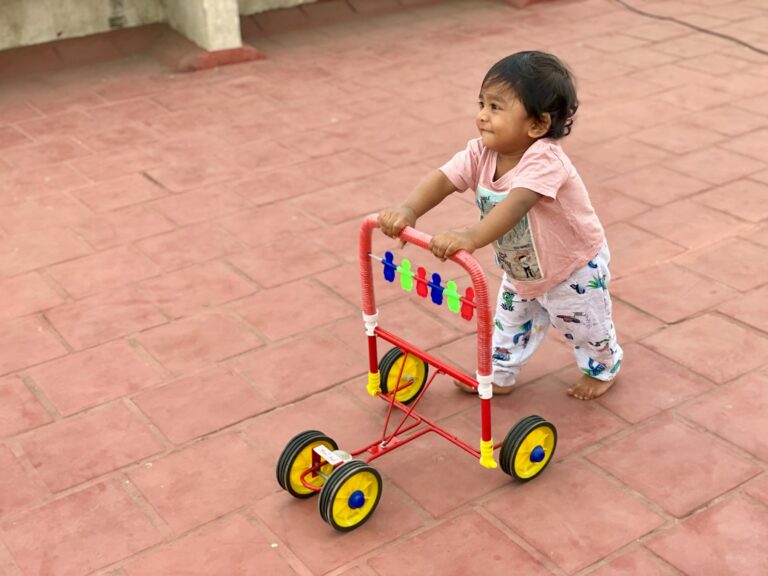Worries about a child’s anxiety, unpredictable meltdowns, or challenges connecting with others can leave parents questioning every move or response. Is it possible to protect children from invisible emotional storms? How can one bolster a child’s inner world, ensuring a comforting sense of safety—not just in moments of calm, but especially during turbulence? At the core of resilient, happy individuals stands one construct both quietly powerful and scientifically undeniable: emotional security for children. This concept sits at the crossroads of neuroscience, psychology, and family life, quietly shaping emotional intelligence, confidence, and future relationships. Read on to uncover why this foundation is indispensable, how daily interactions influence a child’s nervous system, and which tangible actions can help foster a more harmonious and secure journey through childhood.
Why Emotional Security for Children Matters
Imagine a child’s mind as a delicate calibration tool, constantly tuning itself to the environment. Emotional security for children—their profound sense of being safe, valued, and understood—anchors this mental apparatus. Scientific evidence, including neuroimaging studies, highlights that nurturing home environments enhance the regulation of stress hormones such as cortisol. When stress pathways are soothed by consistent emotional warmth, children display improved memory, attention, and even immune function. Anxiety, sadness, and self-doubt? These tend to recede in the face of emotional security, replaced by resilience and the comfort to take risks in learning or play.
The ripple effects are substantial: secure children show marked increases in cognitive development, executive function skills, and social adaptation, as defined in numerous longitudinal studies on child health. As the years tick by, early emotional security contributes not just to mental health, but to physical health, stable social bonds, and overall well-being—rippling subtly into adolescence and adulthood.
The Science and Concepts Behind Emotional Security
At its essence, emotional security for children is the internal conviction that “I am safe, I am loved, and I matter”—especially within the family nucleus. Attachment theory, pioneered by researchers like John Bowlby and Mary Ainsworth, has illuminated the potent connection between consistent, responsive caregiving and children’s future psychological adjustment. Emotional Security Theory (EST) adds to this by demonstrating how predictable routines and nurturing parental presence buffer against psychological stress and support adaptability.
It’s worth drawing a clear distinction here. Emotional security—a child’s psychological anchor—is not identical to emotional safety, which is the tangible, outward atmosphere parents build. The first emerges internally, the second is the nurturing climate that cultivates it.
When emotional needs are chronicly dismissed, a child’s sympathetic nervous system (the “fight or flight” branch) may activate inappropriately, resulting in chronic hypervigilance, sleep disturbances, or emotional outbursts. Medical literature discusses the long-term risks: emotional insecurity is associated with altered cortisol rhythms and increased vulnerability to depression and anxiety.
Building a Secure Parent-Child Bond
How does a parent create this sense of emotional security for children? It rarely comes from grand gestures, but from nuanced moments—a watchful gaze, timely embrace, or an understanding nod. Pediatricians and child psychologists recognize the importance of sensitive attunement: closely observing a child’s signals and providing an appropriate, compassionate response. Children who are able to “collapse” at home after holding tension all day demonstrate a remarkable trust in their primary attachment figure.
It isn’t about flawless performance or omnipresence. Rather, it’s about reliability, consistency, and a steady emotional signal. Have you noticed your child glance your way before venturing onto a new playground structure, silently checking for encouragement or concern? That brief look illustrates the profound reassurance parents offer, silently communicating “you’re safe to explore, and I’m right here if you need me.”
Fostering Secure Attachment: Practical Steps
Effective attachment springs from sensitivity to a child’s needs—whether expressed through infant cries or more complex behaviors as children mature. Behavioral research links stable, responsive parenting with reduced activation of the limbic system (the brain’s emotional processing hub) during stress. Stability and predictability don’t mean rigidity, but rather clear routines, boundaries, and the presence of emotionally available adults.
Giving genuine, undistracted attention for even 10-15 minutes each day has been correlated with measurable improvements in children’s self-esteem and peer relationships. These short rituals become the scaffolding for self-confidence and independent exploration.
The Emotional Climate of the Home
Children learn about relationships by witnessing adult interactions—the first laboratory for their understanding of safety. Family conflict, especially if frequent or hostile, can trigger persistent stress responses in children, altering the development of neural circuits linked to threat detection and emotional regulation.
Conversely, a supportive and warm emotional climate—where adults manage their own stress, apologize after angry moments, and discuss emotions openly—offers a therapeutic buffer. Studies in developmental medicine note that parents modeling adaptive coping strategies teach children how to process, rather than avoid, complex feelings.
Tending carefully to your own emotional health is, in a very real sense, tending to your child’s emotional environment too.
The Power of Expressing Unconditional Love
Believe it or not, children need to hear that they are loved—explicitly, repeatedly, and especially when things go wrong. Simply assuming that love is understood can leave a child adrift, particularly after mistakes. Pediatric research shows that reassurance and verbal affirmation decrease feelings of shame and self-doubt, supporting the development of secure attachment.
When your child’s world falters—be it a playground conflict or a botched spelling test—reminding them of your unwavering support shores up the walls of emotional security for children.
Validating Emotions: Empathy in Action
Emotions are complex, often mysterious even to adults. It’s tempting to soothe or distract a child from uncomfortable feelings, yet validation is the true balm. Emotional validation—by saying “I see you’re scared,” or “I notice you’re angry”—activates the prefrontal cortex, the part of the brain involved in reflection and self-regulation.
Discussing your own feelings, both positive and negative, provides crucial models for emotional intelligence, showing your child that emotions can be identified, discussed, and managed safely. This also helps build coping skills, identified as a protective factor in medical and psychological studies.
Inclusion, Belonging, and Participation
A child who feels involved in family decisions or everyday rituals, no matter how small, acquires a deep sense of belonging—the backbone of emotional security for children. Educational research highlights that involvement, even in mundane chores or shared meals, solidifies identity and emotional bonds.
Allowing a child responsibility—choosing what to wear, planning a meal, or helping set the table—promotes autonomy while affirming that every family member has value and agency.
Core Building Blocks of Emotional Security
What underpins emotional security for children? Science highlights several factors:
- Consistent caregiving: Predictable responses and routines hush the fight-or-flight system.
- Emotional availability: Children flourish when adults respond to signals, soothing distress and celebrating joy.
- Unconditional love: Acceptance remains, regardless of conduct.
- Open communication: Naming feelings and encouraging expression cultivates emotional literacy and self-awareness.
- Physical safety: No constant threats or unresolved conflict; a setting for rest, play, and social exploration.
- Encouragement of autonomy: Opportunity to try, fail, and try again, building competence and independence.
These elements, woven together, generate a strong internal framework that allows children to handle stress, setbacks, and uncertainty.
What Influences Emotional Security for Children?
Not every home or circumstance is the same. Several factors shape this foundational concept:
- Consistent parenting style: Warmth, boundaries, and empathy nurture trust and positive behaviors.
- Parental mental health: When adults model emotion regulation and self-care, children learn by example. Chronic parental stress can, conversely, elevate children’s baseline stress signals.
- Socioeconomic stability: Financial insecurity can strain routines and parent-child interactions, but togetherness and open communication buffer these effects.
- Wider environment: Exposure to trauma, bullying, or social exclusion raises psychological risks. The protection offered by caring, stable adults can mitigate these impacts substantially.
Recognizing Emotional Security and Insecurity
How do emotionally secure children present in daily life? Look for calmness, willingness to express emotions, flexible adaptation to changes, and age-appropriate independence. They typically recover well from setbacks and trust both peers and adults.
On the other hand, persistent anxiety, withdrawal, aggressive impulses, or regressions might indicate compromised emotional security for children. Warning signs include significant mood swings, recurrent self-critical statements, sleep disruptions, or loss of interest in activities.
Medical professionals emphasize the importance of early intervention when these signs are present—a timely response can reestablish security and stem long-term difficulties.
Strategies and Tools to Strengthen Emotional Security
Evidence-based strategies for supporting emotional security for children are both practical and accessible:
- Regular, attentive time with your child (even in short intervals)
- Verbal and physical affection: gentle touch, encouraging words, active listening
- Predictable routines: mealtimes, bedtimes, transition rituals
- Consistent, clear boundaries (without harshness)
- Emotion coaching: labeling feelings, exploring solutions together, sharing personal experiences of emotional ups and downs
- Encouraging problem-solving and independence, adapted to age and temperament
- Accessing professional help for ongoing distress—therapeutic support truly makes an impact
Creative practices also offer comfort: creating stories together, helping your child imagine an “emotional shield” in social challenges, or using simple grounding exercises (deep breaths, holding a favorite object) during moments of distress. These techniques are actively explored in contemporary psychological research for enhancing emotional resilience and recovery.
Schools and community environments also play a substantial role. Supportive teacher-student relationships, predictable routines, anti-bullying programs, and trauma-informed approaches amplify the benefits cultivated at home.
What if Emotional Security Breaks Down?
Times of upheaval—whether divorce, bereavement, bullying, or trauma—can shake the foundations of emotional security for children. During such periods, practical anchors are vital:
- Keep routines as stable as possible
- Name and validate emotions without rushing to fix or “move on”
- Maintain warm, consistent caregiving, even in your own distress
- Seek support from child-centered professionals—pediatricians, psychologists, school counselors
Scientific literature underscores: repair and reconnection, even after ruptures, can rebuild emotional safety and foster remarkable resilience.
Key Takeaways
- Emotional security for children forms the bedrock of healthy emotional development, social adaptation, and well-being well beyond childhood.
- The interplay between consistent, nurturing caregiving, clear routines, open emotional expression, and opportunities for autonomy establishes a protective foundation against life’s inevitable stresses.
- Recognizing signs of insecurity—particularly persistent anxiety, withdrawal, regression, or irritability—offers an opportunity for timely intervention.
- Parental self-care, attention to adult relationships, and modeling of healthy emotional management have a surprising impact on a child’s internal world.
- Collaboration with schools, medical professionals, and support networks is invaluable, particularly during challenging times.
- For additional tailored advice and to access free child health questionnaires, parents can download the Heloa app—an accessible resource for ongoing guidance and reassurance.
- Above all, emotional security for children is built, not through perfection, but through ongoing, compassionate connection, patience, and a willingness to keep showing up—day after day.
Questions Parents Ask
How can I tell if my child feels emotionally secure?
A child who feels emotionally secure typically shows trust in adults and feels comfortable expressing their emotions—both positive and negative. You might notice your child exploring their environment, bouncing back from small setbacks, or seeking comfort from you when things get tough. It’s also common for emotionally secure children to form healthy relationships with peers and demonstrate curiosity about new experiences. If you sense your child seems especially withdrawn or anxious, rassurez-vous, every child develops at their own pace. N’hésitez pas à ouvrir le dialogue et à observer leurs réactions dans différentes situations.
What should I do if my child has trouble trusting adults?
If your child struggles with trust, it may be helpful to focus on building routines and providing consistent responses. Offrir des moments d’écoute active et de partage peut renforcer le sentiment de sécurité. Patience is key—sometimes, it takes repeated gentle reassurance for a child to trust more openly. Encourage them to share their feelings, and remind them they are valued, even if trust takes time to develop. Créditer chaque petite avancée peut vraiment faire la différence.
Can emotional security impact my child’s performance at school?
Absolutely—children who feel emotionally secure are more likely to show confidence when facing new tasks, ask for help when needed, and manage setbacks constructively. Emotional security supports attention, memory, and social interactions in the classroom. If you’re noticing changes in your child’s school performance or motivation, essayez d’en discuter avec l’enseignant(e) et assurez-vous que votre enfant se sent entendu et soutenu à la maison comme à l’école. This can help create a supportive bridge between home and school life, benefitting your child’s overall well-being.









